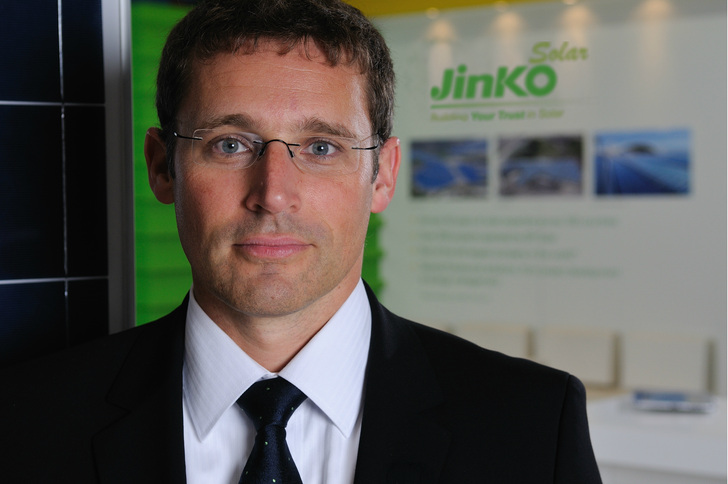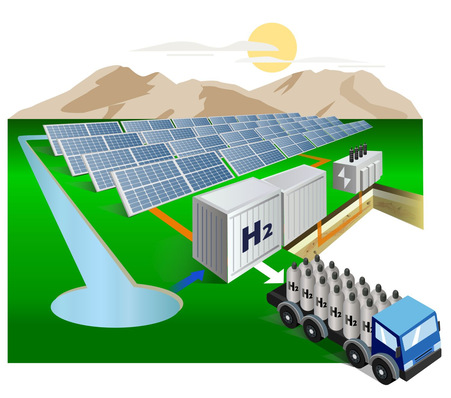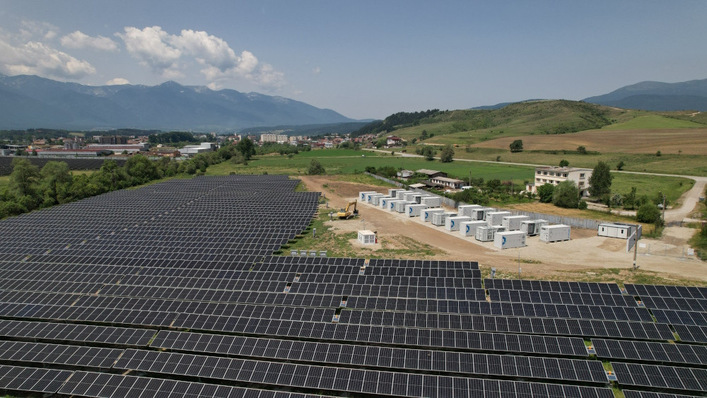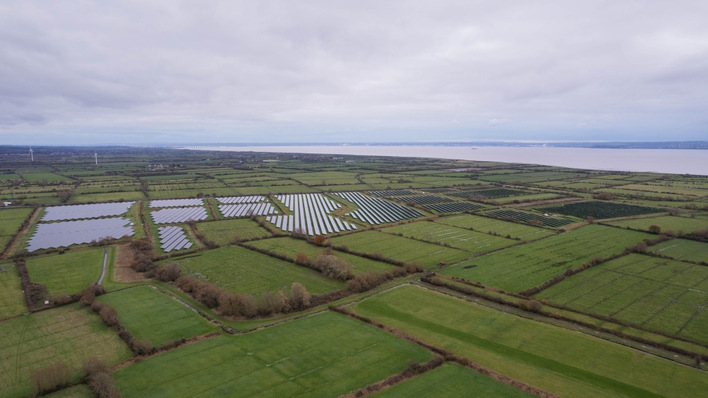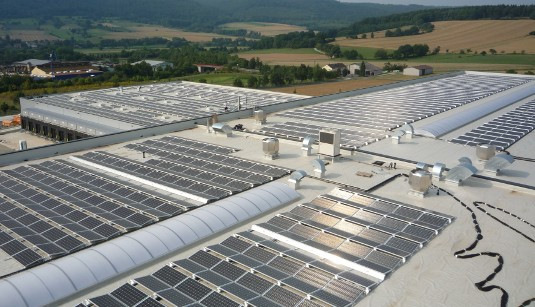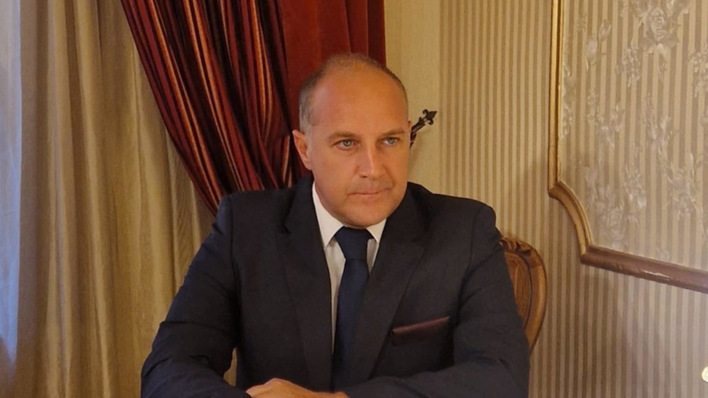How has the market for solar panels in Europe developed for Jinko Solar in 2015?
Unfortunately, the market is continuing to consolidate at a fairly low level. The result is that Europe, which used to be a leading region is increasingly being left behind compared to the rest of the world. While international markets like the US, Latin America, the Middle East or Asia are going from strength to strength and have fantastic growth prospects thanks to sharply falling systems prices, many of our European customers are forced to significantly reduce the size of their organisations.
What alternatives are there?
Our customers either have to move their business abroad or cease their involvement in the solar industry altogether. But their hope is that the minimum price restrictions on Chinese panels will be abolished sometime this year. That would significantly bring down system costs and increase returns, or in some cases make generating returns at all possible. How this can work has clearly been demonstrated by the Swiss solar market. Capacity expansion has levelled out and stabilised at around 300 megawatts. The EU’s minimum prices do not apply to Switzerland; solar panels are being sold at global market prices.
The Turkish market is also exempt from the minimum price restrictions. Are you expecting a development similar to that of Switzerland?
Possibly even better. Three years ago, we started to develop the Turkish market. For the last two years we have been in the country with a special team. In 2015, Turkey officially added 300 megawatts of PV capacity to the grid, and we sold about 100 megawatts’ worth. That is a decent share. For this year, I see a potential of 800 to 900 megawatts – an enormous amount. The Turkish economy is growing and electricity prices are high. Also, the solar irradiation is very favourable and there is enough space for solar generators. Already, the solar market in Turkey works without the aid of subsidies.
So it is the EU’s minimum prices that are the problem?
As we see it – yes. They are the main problem inhibiting growth. In the global market, solar panels are being traded at 42 to 45 euro cents per watt. In the EU, depending on the order, it is between 56 and 61 euro cents. That is 30 percent above global level. Without the minimum price restrictions, our European customers in sunny regions such as Spain or Portugal could build large-scale projects based on a power purchase agreement (PPA) of 5 to 6 euro cents per kilowatt hour. The minimum prices thwart any kind of growth. Without them, so-called PPA projects would easily be economically viable here in Europe as well.
The US also imposes punitive import duties, but the market there is booming. What are the Americans doing differently?
Brussels is thinking according to a protectionist mind-set, where the state dictates prices. This results in markets continuing to do badly. The money keeps flowing to the Asian solar panel producers, since they are still selling panels in Europe – just at higher minimum prices compared to the rest of the world. The US imposes import duties, which benefit the tax payer, because it goes into the federal budget. At the same time, America has very interesting tax incentives that make it a lucrative option especially for large investors to put their money in photovoltaics. These ITCs were recently extended until 2020. The American mind-set is market-driven, and that pays off as far as capacity additions are concerned. The US is Jinko’s second largest market after China. For 2016, we are planning to sell 2 gigawatts of capacity there.
What are your expectations for 2016?
That depends a lot on how long the minimum price restrictions will stay in place. If the 30 percent cost reduction for solar panels I mentioned earlier was made possible, high feed-in tariffs would no longer be necessary, because then even larger projects would be economically viable – without expensive subsidies. All of our European customers in the UK, Germany, Italy, Spain or France are developing these kinds of projects based on PPAs. All they are waiting for is the abolition of minimum prices. If combined with a little bit of support of storage solutions, this would result in substantial growth for Germany, and thus also in Europe.
And if minimum prices are only abolished in 2017?
Then I suppose we will have to face another year of market consolidation and without significant growth stimuli. The gap between Europe and the thriving non-European markets would get wider. And in the meantime we would have to deal with another problem that surely is not in the interest of the European market.
Which problem do you mean?
Because of the EU’s minimum price restrictions, unless the EU Commission decides to adjust the price level, prices for Chinese solar panels never fluctuate. On the other hand, in 2015, the prices of non-Chinese manufacturers have fallen considerably below the minimum price. German manufacturers are currently selling at around 10 to 15 percent lower than what is defined as a realistic market price. This should prove the accusations of price dumping levelled at Asian producers to be absolutely absurd. Meanwhile, either Chinese or European suppliers have little incentive to lower prices as long as they are determined by the EU.
What trends can you see on the European markets?
In the UK, Spain, Portugal and France we are on the verge of reaching grid parity. According to a PPA model, tariffs for solar electricity could fall as low as between 4 and 9 cents per kilowatt hour. Furthermore, an increasing number of markets are transitioning from achieving returns from feed-in tariffs to saving electricity by means of photovoltaics. The market share for storage solutions will increase across Europe.
In addition to standard solar panels, Jinko also offers intelligent modules with an integrated DC optimiser. What role do such smart solar panels play in the European markets?
The new panels optimised for performance are clearly gaining in importance, because the intelligence of the system allows us to reach market segments and sites which would otherwise not be viable. Simply being able to equip partly shaded roofs and pieces of land with a higher density of panels opens up a large new market. Declining costs due to economies of scale may in the long run result in producing micro processor-equipped intelligent solar panels as the default option.
What product is your strongest asset?
For 2016, we are focusing all our energies on our performance-optimised panels, which give us a competitive edge in the market segment of private and commercial rooftop installations – even with the high minimum prices in place. Our range of smart panels optimised using a variety of technologies allows us to stand out as the leading supplier of quality products.
The smart panels have been on the market since early 2015. In what capacities do you offer them?
Our standard panel with 60 polycrystalline cells has a capacity of between 265 and 270 watts. It is free of PID, and we can also put together a panel of 72 or 96 cells. However, these are only relevant in a commercial context, as handling the heavy panels can be difficult. It takes at least two people. The DC-optimised panels are more suitable for private installations and smaller roofs. The integrated electronics use about three to five watts per panel. We ship them at 260 to 265 watts of capacity. Additionally, we also offer panels for strings with a system voltage of 1,500 volts, aimed at commercial installations and the utility market. If the customer wishes, we can also make panels from monocrystalline cells.
In which markets are the intelligent panels selling particularly well?
In Germany and the UK. Demand is seriously rising there. These panels offer an added value that justifies the higher purchasing price. Demand is also very strong in the US. Markets where low cost is more important, the demand focuses on the more inexpensive standard panels.
HS/IR


